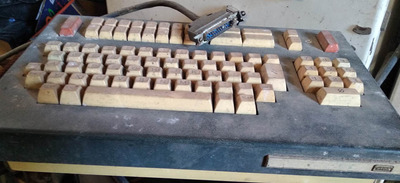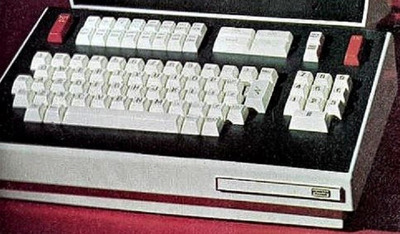First post, by Miphee
- Rank
- Oldbie
I finally got the nerve to clean the Bunker Ramo 2200 terminal keyboard, maybe my experiences will help you decide what to do and what NOT to do when attempting to restore a piece of hardware to it's former glory.
The original owner stored it in the attic of a tumbledown farm building in 1991 so it was exposed to dust, direct sunlight, heat-cold cycles and rat piss for 28 years. 70's terminals were popular in Hungarian companies in the 80's and were still in use when Western countries already switched to more modern hardware. Interesting to note that even though Hungary had a hard-line communist government they still allowed the import and use of American technology in certain areas like sciences and banking.
IBM Hungary was founded in 1936 and that cooperation never stopped even during the Cold War.
When the Soviet Union collapsed Hungary was exposed to all of the new technology and old terminals were quickly replaced by modern computers. With the replacement of old mainframes these terminals were useless so thousands of them were dumped within months and only a handful remained intact. Some of them were "liberated" by employees just like this terminal.
When I opened it I expected rust everywhere because the bottom 4 screws and the 25 pin d-sub connector had rust on them. Aside from some dirt there was minimal corrosion on the transistors so it was a promising start!
My initial optimism disappeared after I removed the top cover, it was the filthiest keyboard I have ever seen! No way it was working, even the mechanisms under the keycaps were dirty, some of them stuck.
The buckling springs were rust-free though so maybe it was not so bad after all.

